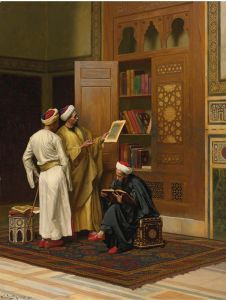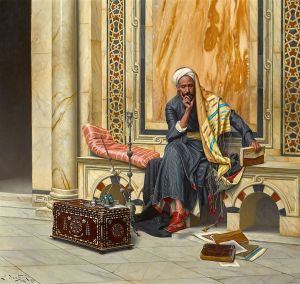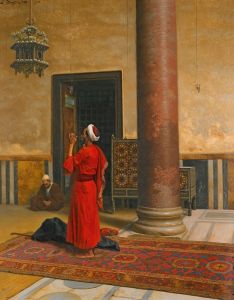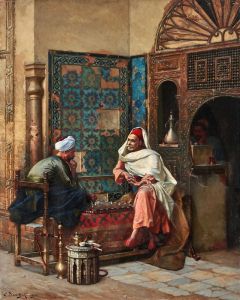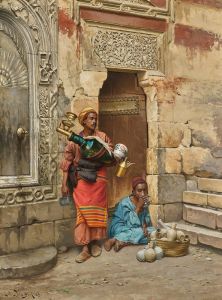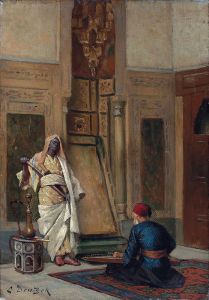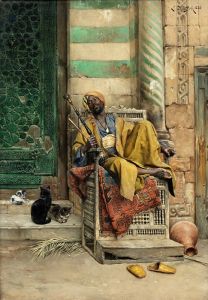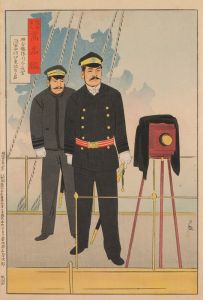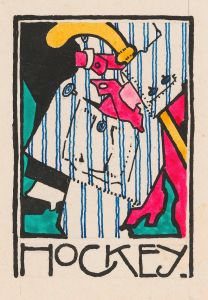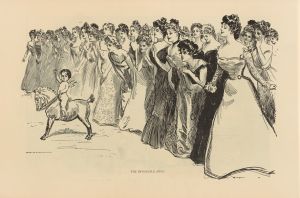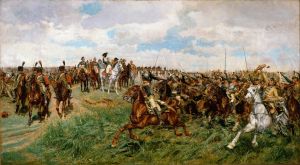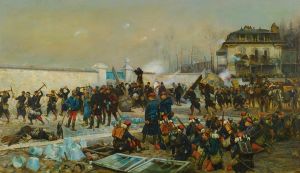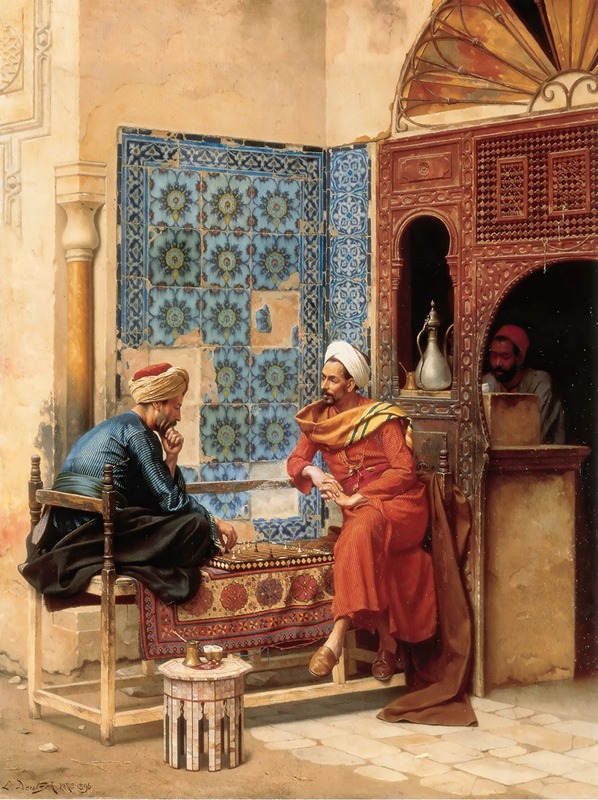
The Chess Game
A hand-painted replica of Ludwig Deutsch’s masterpiece The Chess Game, meticulously crafted by professional artists to capture the true essence of the original. Each piece is created with museum-quality canvas and rare mineral pigments, carefully painted by experienced artists with delicate brushstrokes and rich, layered colors to perfectly recreate the texture of the original artwork. Unlike machine-printed reproductions, this hand-painted version brings the painting to life, infused with the artist’s emotions and skill in every stroke. Whether for personal collection or home decoration, it instantly elevates the artistic atmosphere of any space.
Ludwig Deutsch (1855–1935) was an Austrian painter known for his Orientalist works, which often depicted scenes inspired by the culture, architecture, and daily life of the Middle East and North Africa. One of his notable paintings, The Chess Game, exemplifies his meticulous attention to detail and his fascination with the region's aesthetics.
The Chess Game portrays two men engaged in a game of chess, seated in an opulent interior that reflects the artist's deep interest in Islamic art and architecture. The setting is richly decorated, featuring intricate tile work, carved wood, and textiles, all rendered with remarkable precision. Deutsch was known for his ability to capture the textures and patterns of such materials, and this painting is no exception. The composition draws the viewer's attention to the players and their intense focus on the game, while the surrounding environment adds depth and context to the scene.
Deutsch's works were often based on his travels to the Middle East and North Africa, as well as his studies of artifacts and photographs. He was part of a broader movement of Orientalist painters in the 19th and early 20th centuries, who sought to depict the cultures and landscapes of the "Orient" as they imagined or observed them. While these works were celebrated for their technical skill and exotic appeal, they have also been critiqued for perpetuating stereotypes and romanticized views of the regions they depicted.
The Chess Game is a testament to Deutsch's mastery of light, color, and detail. The interplay of light and shadow in the painting enhances the realism of the scene, while the vibrant colors of the players' garments and the surrounding decor create a visually striking composition. The chessboard itself is a focal point, symbolizing not only the intellectual engagement of the players but also the cultural significance of chess as a game with deep historical roots in the Islamic world.
Today, The Chess Game is considered an important example of Orientalist art and is appreciated for its artistic quality and historical context. Like many of Deutsch's works, it provides insight into the 19th-century European fascination with the Middle East and North Africa, as well as the artistic techniques and cultural perspectives of the time.





